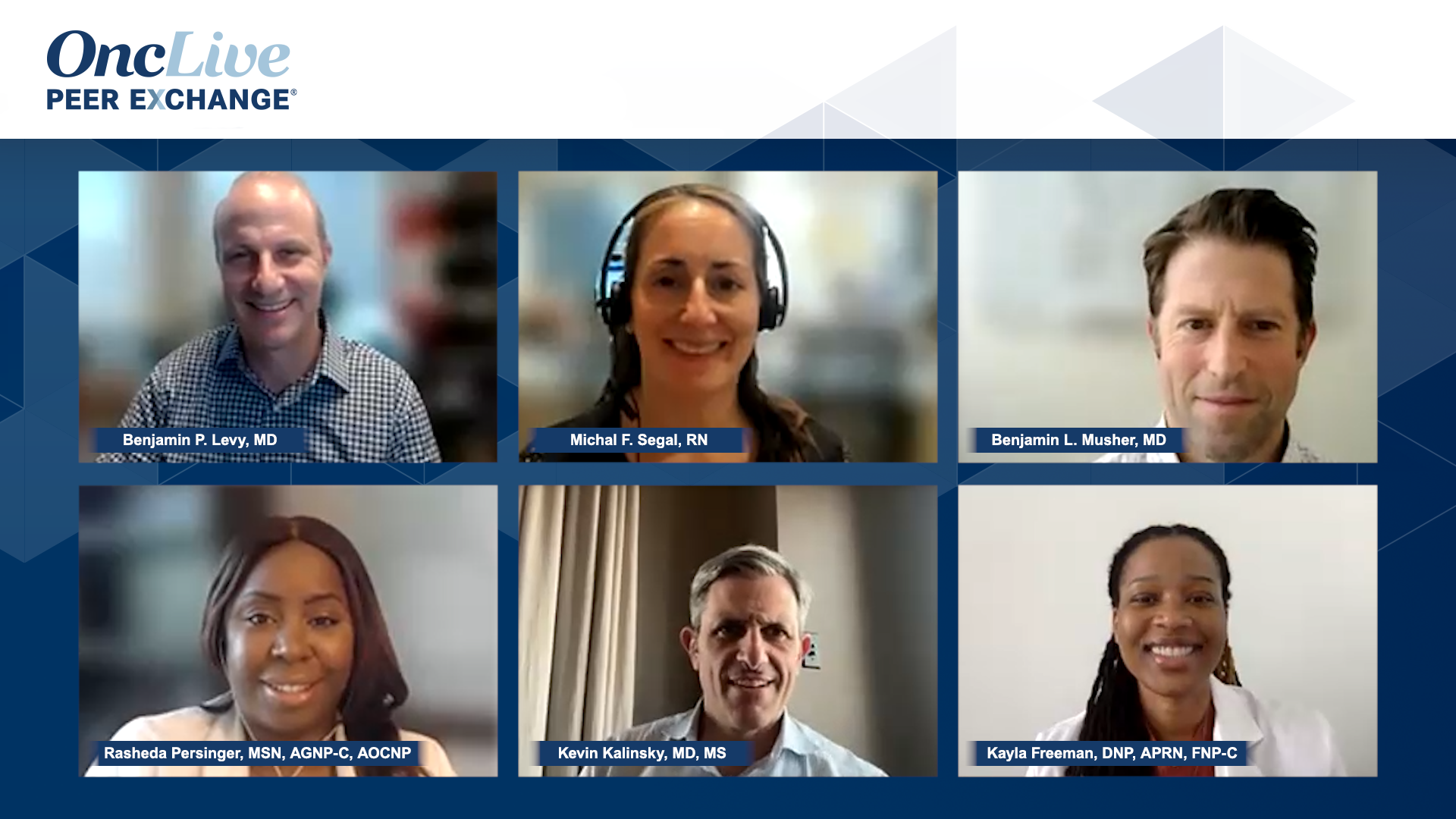- Advertise
- About OncLive
- Editorial Board
- MJH Life Sciences brands
- Contact Us
- Privacy
- Terms & Conditions
- Do Not Sell My Information
2 Clarke Drive
Suite 100
Cranbury, NJ 08512
© 2025 MJH Life Sciences™ and OncLive - Clinical Oncology News, Cancer Expert Insights. All rights reserved.
Future Outlook for Treating Breast and Lung Cancers
Medical oncologists discuss prospects and challenges in the breast and lung cancer treatment landscapes.
Sponsored in part by Daiichi Sankyo. Content independently developed by OncLive®.
Transcript:
Benjamin P. Levy, MD: The breast [cancer] world has been using these drugs the longest for all of us, actually. Where do we see this going, Kevin [Kalinsky]? Where does this go from here on out for ADC [antibody-drug conjugates]?
Kevin Kalinsky, MD, MS: I think, for us, the biggest impact is going to be in the residual disease adjuvant setting. That's where the ADCs are moving. So, there is a German study that's looking at if you have residual disease and it's HER2 negative. There are United States studies that are looking at ADC with or without IO [immuno-oncology]. For instance, there's TROPION-Breast03 [NCT05629585], which, if you have triple-negative breast cancer, got neoadjuvant chemotherapy, and have residual disease. It's dato [datopotamab] vs dato plus durva [durvalumab] vs physician choice therapy, which is essentially capecitabine with or without pembrolizumab. So, that is where I think the field is really moving. And I really wouldn't be surprised if we started utilizing the agents that we talked about in that setting.
Benjamin P. Levy, MD: Yeah, interesting. I think in lung [cancer], it may just be the opposite. The adjuvant space is certainly an area we need to focus on. But for us, given that 70% to 80% of all lung cancer patients present with advanced disease, which is a testament that CT screening is nowhere near as good as colonoscopies or mammography, the whole energy, focus, and enthusiasm is in the advanced stage setting. Obviously, TROP2 ADCs aren't approved yet, but we'll see what that shows.
Yesterday, JCO [the Journal of Clinical Oncology] publication by the memorial group looking at patritumab deruxtecan on HER3 DXd, looking specifically at each of our mutant lung cancer response rate of 30%, which is not bad, with PFS [progression-free survival] of around 4 to 6 months. This is the third line. This is not like gastric third line, but nevertheless an unmet need. Patients who are EGFR [epidermal growth factor receptor] positive who have received osimertinib and chemotherapy then got patritumab deruxtecan. It's not too shabby although we would hope for more.
We've got a lot of other ADCs that are coming down the pike: tusamitamab, rapamycin, tusamitamab deruxtecan, and a lot of others. There have been some crazy data presented out of China that was an oral session for the developmental therapeutics track at ASCO [the American Society of Clinical Oncology Annual Meeting] this year showing just remarkable data for some of these novel bispecific ADCs and the monoclonal antibodies binding to 2 different epitopes with a novel payload. It was an EGFR, HER3 ADC, so binded to HER2 and EGFR. It had a novel payload and the objective response rate in EGFR mutant lung cancer, stage IV is like 65%, an average line of 3. So, again, I think we’re just beginning to scratch the surface of the structure of these and the basic components of it.
I think that the other challenge here is biomarker selection. And I’ll go back to IHC [immunohistochemistry screening]. I keep coming back to it. I just don’t think that these drugs work the way we think they work. I think, yes, it binds to some protein and gets internalized, but I think we’re just trying to understand how this is happening and why is it over and over and over in lung cancer that overexpression with a protein makes no difference at all. There have been probably 400 or 500 patients now looked at where IHC is not making a difference. So, there's got to be another way these drugs are working.
We talked about the bystander effect. We didn't talk a lot about ADCC [antibody-dependent cell-mediated cytotoxicity], but the idea is that these drugs may be able to elicit an immune response. So, there's a lot of rationale to combine them with immunotherapy. So, we're leading a study looking at that, combining ADCs with immunotherapy, because both drugs seem to be active. But it's obviously an interesting narrative that's starting to unwind here with these drugs working a little bit differently in each tumor type, but clearly gaining approvals in different settings. So, again, we're going to learn a lot from breast. I know there's a lot of interest in looking at the assays used in breast for HER2 and applying them to lung to see if there's some sort of consistent biomarker across tumor types. But it's a really interesting time to be in the field with—at least in lung—with targeted therapy, immunotherapy, chemotherapy, and now, antibody-drug conjugates.
Transcript is AI-generated and edited for clarity and readability.
Related Content:





